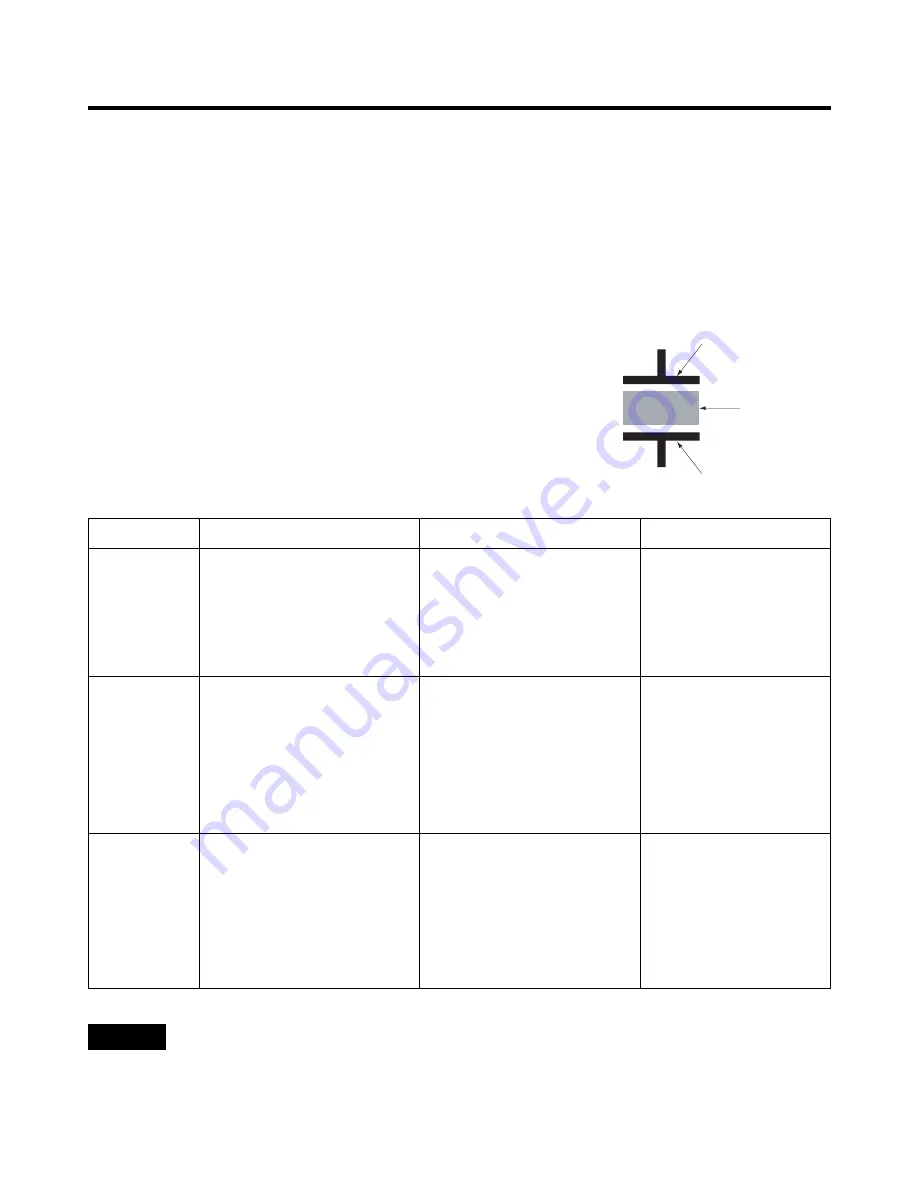
9-1-7. Capacitor operating principle and temperature characteristics
(1) Function
1. Capacitor (C/S): Sometimes called the starting capacitor, it is used to improve the motor operation characteristics in low
pressure because the operating torque is weak based on the characteristics of the motor within the
compressor of the refrigerator in low voltage areas (85% or less than rated).
2. Capacitor (C/R): Sometimes called the running capacitor, it is used to improve the operating torque of the motor within the
compressor of the refrigerator. (Capacitor for operation)
(2) Concept
When you put dielectric material between two facing electrodes and connect the
voltage, the electric charge will be accumulated. This functional device is called a
capacitor and the basic structure is as shown in the right figure.
(3) Poor symptom (product)
u
Before the measurement, short the capacitor with a driver to discharge all the electricity.
u
After setting the multiplier rate to maximum within the resistance measuring range, measure while switching
the terminals.
Characteristics of each part
- 51 -
A electrode
Dielectric
material
B electrode
Problem (parts)
Symptom
Check method
Resolution
Disconnected
(open)
Shorted
Normal
1) Compressor does not work.
2) Compressor is heated.
3) OLP is operating.
4) Power fuse is disconnected.
(Immediately after exchanging
or frequently)
1) Compressor does not work.
2) Compressor is heated.
3) Compressor repeatedly works
and stops.
4) OLP is operating.
5) Power fuse is disconnected.
(Immediately after exchanging
or frequently)
1) Compressor does not work.
2) Compressor is heated.
3) Compressor repeatedly works
and stops.
4) OLP is operating.
5) Power fuse is disconnected.
(Immediately after exchanging
or frequently)
- Exchange the capacitor
- Exchange the capacitor
- Check other parts
- Measure the both ends of the
capacitor with a tester to see if
there is no change:
∞ Ω
.
- Measure the both ends of the
capacitor with a tester to see if it
is 0
Ω
.
- Measure the both ends of the
capacitor with a tester to see if it
decreases and then slowly
increases (Move toward 0
Ω
and then to
∞ Ω
).
Caution





















